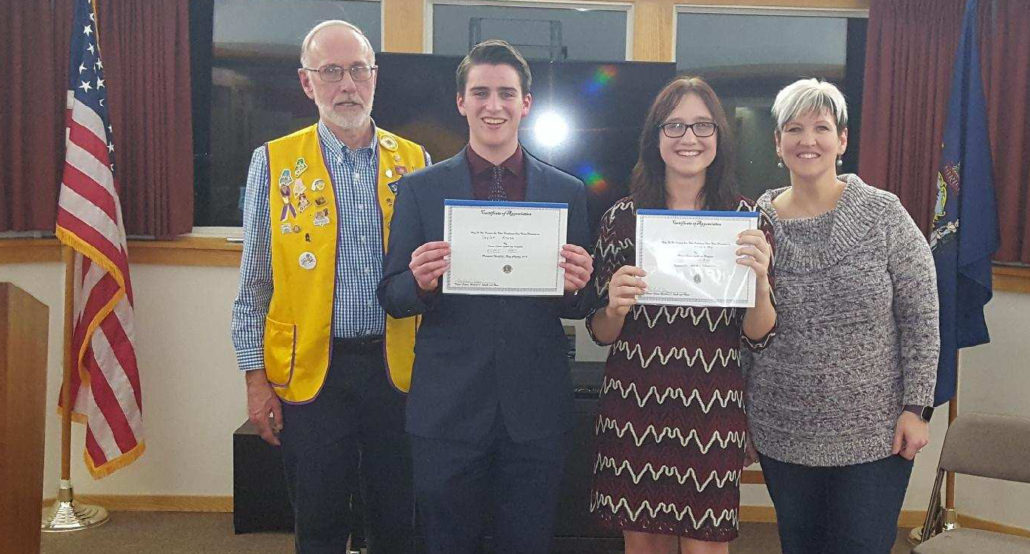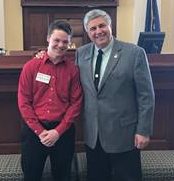Pssst! I know a bit about my fellow China residents. I know, for example, that 96 percent of you want to stay in China as you age. In fact, on the whole, most of you think China is a pretty great place to live. There is high confidence in our emergency services, with 93 percent of you happy with the Volunteer Fire Department, 89 percent satisfied with ambulance and rescue services, and 87 percent pleased with the response from law enforcement.
Now, how do I know this? I didn’t go around and ask everyone in town. Thankfully, I didn’t have to. There’s a committee dedicated to doing just that. It’s called the China for a Lifetime Committee (CFAL). Members were appointed by the China Board of Selectmen back in April 2017, with the first committee meeting in May. The committee is headed up by Chairman Christopher Hahn, owner of 3 Level Farm, a 145-acre, diversified organic farm in China.
You might remember a survey sent out by the committee last October. The four-page questionnaire was mailed to every seventh household in China and distributed in the October 18 edition of The Town Line. Copies were also available from the town office and the transfer station between October 18 and November 30.
A total of 291 China residents completed the survey and the results were collated and shown to the committee in January. The survey was developed, distributed, and analyzed by the committee with technical assistance from Patricia Oh, of Bowdoin, a consultant with the Tri-State Learning Collaborative on Aging.
I asked Hahn about the committee’s motivations for sending out the survey. “What we’re trying to do is learn, from all of the citizens of China, what types of services, facilities and systems will enhance their lives and make them want to live a lifetime in China,” he told me. “For a single senior citizen, it will be one thing. For a 20-year-old, just joining the workforce, it will likely be something else. We hope to connect the dots through better systems of communication and networking.”
That sentiment was certainly front and center at the committee’s meeting last month, where they discussed the survey results and set priorities on what to tackle first. The number one issue that kept cropping up was ‘Better Communication.’
Part of the survey centered on social activities in China. Although 70 percent of respondents were satisfied with the activities available in China, the top reason given by those that weren’t was a lack of information. In other words, people want to be involved, but are not aware of what there is to be involved in.
Similarly, many people were unaware that places like the South China Community Church or local Masonic Lodges had programs open to the public. Did you know the China Conference Center has a gymnasium that is available for public use by the residents of China? Did you know China has an emergency shelter with its own water, septic and generator for electricity? I sure didn’t.
A much more difficult question is how to go about improving communication by making information more available and easier to find. A number of ideas were offered by committee members and mentioned by respondents in their comments on the survey. Among them was the suggestion of expanding the Tuesday Notice, an announcement that currently focuses on school news and events. Another was to create a ‘Friends of China’ Facebook group, where activities could be announced. The most promising idea was to expand The Town Line’s online ‘Calendar of Events’ page into an exhaustive, and searchable, community calendar.
According to the CFAL survey, 77 percent of you already turn to The Town Line for information about local activities. I asked Roland Hallee, managing editor of The Town Line, what he thought about the idea of hosting a community calendar. “I think it’s a terrific idea,” he told me. “The Town Line has been the voice of China and the surrounding communities for the past 30 years. Now that we’re online, it only makes sense that townline.org becomes the online portal for information about what is going on in the town. We have been discussing ways to improve our Calendar of Events page and will help the CFAL committee achieve its goals in any way we can.”
Respondents to the survey were also looking for more activities for their age group. Only 39 percent of those surveyed thought there were enough programs for youth and children and many were looking for additional activities for kids that do not participate in sports. Adults also expressed an interest in more activities, with wellness programs, outdoor recreation, lifelong learning and socialization opportunities topping the list. However, it is unclear whether there is an actual lack of opportunities or just insufficient information about those already available.
China residents are generally generous folks, with 38 percent of respondents saying they volunteer on town committees or for local charity organizations. Some respondents expressed a desire to volunteer but did not know what needs there were in the community. To that end, The Town Line will be adding a special “Volunteering” section to our classifieds page. All listings will be free. If you run a community organization and you need volunteers, or if you are a citizen and want to give your time to a worthy cause, send The Town Line an email with the subject “Volunteer Classifieds” and we will list you in the new Volunteering section of the weekly classifieds for free! (This service will be available for all towns where The Town Line is distributed, not just China.)
The CFAL survey identified some needs and areas for improvement in our community as well. Nearly 40 percent of those who responded admitted they were having difficulties financially, and 15 percent said they sometimes did not have enough food to eat. Surprisingly, only 3 percent have used the services of the China Food Pantry. (Local food pantries with operational hours can be found at townline.org/food-pantries.)
About 12 percent of those surveyed said their homes are not warm enough during winter months. And while only 3 percent stated their homes were missing smoke detectors, 24 percent did not have carbon monoxide detectors and 16 percent did not have a working fire extinguisher. This subject is of special importance to the CFAL Committee, and they are looking for a way to make sure all China homes are at least equipped with smoke detectors. The Volunteer Fire Department used to give them out but had to stop for liability reasons. The committee is currently looking for a way to get around this problem of liability.
Another goal of the committee has been to look at the services available to our senior residents. According to the 2016 U.S. Census data, 12 percent of our population is over the age of 65, with another 9 percent reaching retirement age within the next five years. That’s a pretty sizable portion of our population, but currently, there is no senior housing facility located in China. Our older citizens are often forced to move out of town, to Waterville or Skowhegan, and away from family and friends when no longer able to live on their own.
Joann Austin, member of the CFAL committee and retired selectman, is particularly passionate on this subject. “Our older population in China is growing,” she said about the initiative. “They are an important part of this town and we need a local facility so they can stay here and continue to contribute to the community as they grow older.”
The China for a Lifetime Committee’s work is only just begun, but with the completion of the survey they’ve taken a major step toward their goal: to make China a town where you’d want to spend a lifetime.
Based on the survey results and community feedback, the CFAL committee plans to release an action plan sometime in the late Spring of 2018. The official assessment and analysis of the survey results can be found at the town office or on their website.
Are you interested in making a difference in China? The China for a Lifetime Committee’s meetings are held at the town office and open to the public – and community participation is encouraged! The next meeting is scheduled for Thursday, May 17, at 6:30 p.m.
(Please click here to download the China for a Lifetime committee’s official assessment for the 2017 survey.)
Eric Austin lives in China and writes about technology and community issues. He can be reached by email at ericwaustin@gmail.com.
CORRECTION: The South China Community Church was incorrectly referred to as the South China Baptist Church. We apologize for the error.










 The Winslow Baptist Church will be hosting a community Easter egg hunt on Saturday, March 31, at 10 a.m., at the park on Daillaire and Halifax streets, in Winslow. Rain location will be a the Winslow Elementary School. There will be thousands of eggs to gather.
The Winslow Baptist Church will be hosting a community Easter egg hunt on Saturday, March 31, at 10 a.m., at the park on Daillaire and Halifax streets, in Winslow. Rain location will be a the Winslow Elementary School. There will be thousands of eggs to gather.

